Increase uptake of 715 Health Checks
The 715 Health Check is designed to support the physical, social and emotional wellbeing of Aboriginal and Torres Strait Islander people of all ages.
The aim of the 715 Health Check is to help ensure that eligible patients receive primary health care matched to their needs, by encouraging early detection, diagnosis and intervention for common and treatable conditions.
The 715 Health Check should be an opportunity to foster long-term relationships and improve health outcomes through shared decision-making and culturally competent care.
QI activity overview
What is the aim of this QI activity
Improving the uptake of 715 Health Checks for Aboriginal and Torres Strait Islander patients.
What will I need to do?
Complete ten (10) 715 Health Checks for Aboriginal and Torres Strait Islander patients in the next 3 months.
How will I complete this activity?
Prepare your practice to be a culturally safe and welcoming environment for Aboriginal and Torres Strait Islander patients
Identify Aboriginal and Torres Strait Island patients
Offer 715 Health Checks to eligible patients
Access clinical guidelines and referral resources
Measure progress and evaluate.
Where do I document my results?
Who can I contact for support?
For support with this activity please contact the General Practice Quality Improvement team on Ph. 38647540 or email support@bsphn.org.au.
Step 1: Start your activity
1. Attend Cultural Awareness Training if required.
As outlined in the PIP Indigenous Health Incentive guidelines, at least 2 staff members from your practice (one must be a GP) must complete appropriate cultural awareness training within 12 months of the practice being approved for the incentive.
2. Display culturally relevant health information, flags, and artwork in your practice.
3. Review available Aboriginal and Torres Strait Islander health services in your area, along with any supporting resources provided within this activity. As a first point of contact, we would encourage reaching out to Mob Link via 1800 254 354.
4. Develop a process to review your patients’ ethnicity status to ensure they have an ethnicity recorded, so you can understand your patient population.
e.g. Utilise the “Patients missing PIP QI or accreditation measures” report in Primary Sense. The “Ethnicity” column will note an “N” if a patient does not have an ethnicity recorded. You may choose to review patients on this list on a regular basis.
5. Prior to contacting patients for their 715 Health Check, ensure you have a shared understanding amongst your practice team of how to conduct a 715 Health Check.
Your practice team could:
meet to review some of the relevant resources attached to this activity e.g. Services Australia short module “Introduction to Indigenous Health Assessments”,
ensure your clinical team are utilising the relevant health assessment templates within your clinical software. For access to downloadable templates, please visit Referral templates | Brisbane South PHN (under heading “Aboriginal and Torres Strait Islander Health Checks”).
6. Identify patients eligible for the 715 Health Checks using the Primary Sense Health Assessments report. You can also confirm patient eligibility using PRODA.
To access the report, on the Primary Sense side bar, go to Reports -> Health Assessments -> Health Assessments for Aboriginal and Torres Strait Islander patients
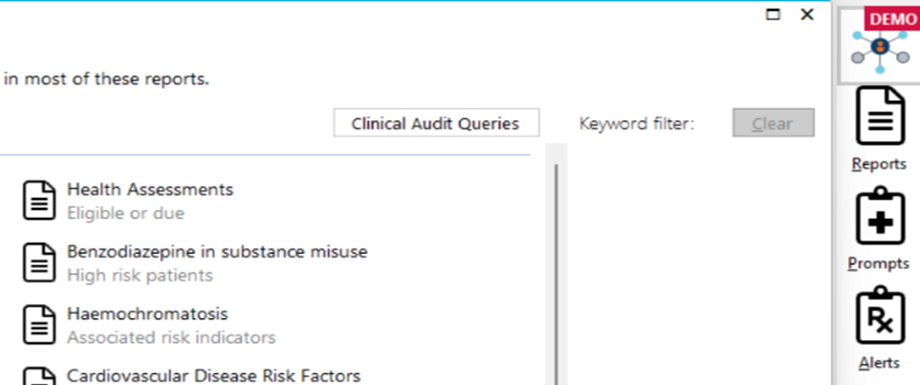
7. Use recall methods (SMS, letter, phone) to invite identified patients for a 715 Health Checks.
8. Use the RACGP’s ATSI health check templates, integrated into Best Practice and MedicalDirector, to support the effective conduct and documentation of health checks that reflect age-appropriate health needs
For Best Practice users:
Access the RACGP templates via word processor templates within a patient file by clicking on the “new letter” icon then “new document”.
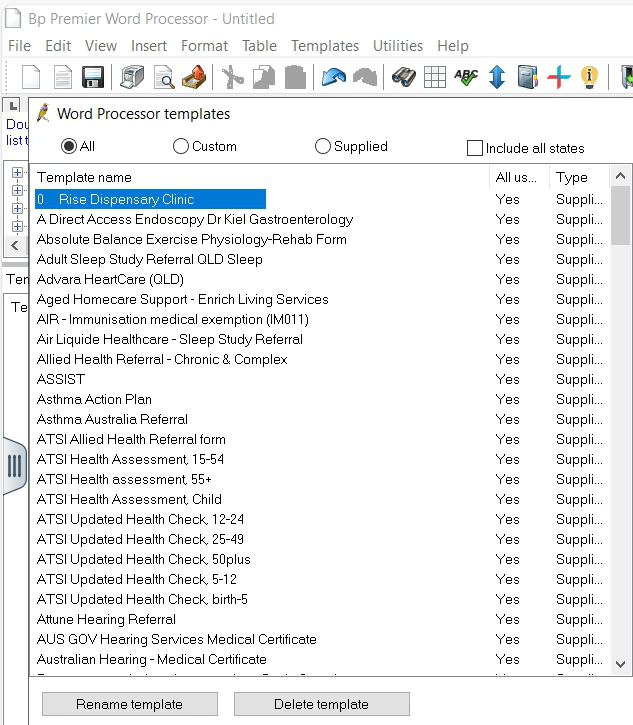
For MedicalDirector users:
Access the RACGP templates within a patient file by clicking on the “letter writer” icon, then the “new” icon and click on “supplied”:
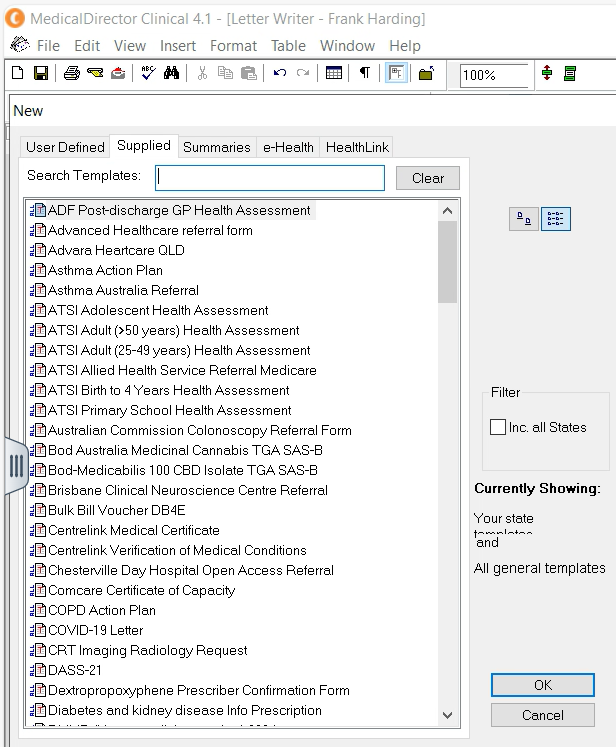
Step 2: Track your results
Track the number of 715 Health Checks completed over your chosen time frame. You can use MBS item billing reports in your clinical software to track the number of health assessments billed.
For Best Practice users:
Select “management” tab then “Reports”
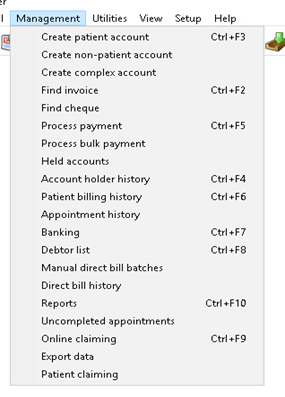
1) Select “item summary by location”
2) Select “Billing” tab
3) Select a date range
4) Select “715” under MBS items
For MedicalDirector users:
1) The billing report function for MD is in Pracsoft. In Pracsoft, go to “reports” and then “all reports”
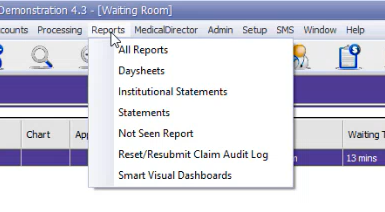
2) Under report type, choose “fees”
3) For report name choose “practice fees by item no.”
4) In the “common” tab, select the date range
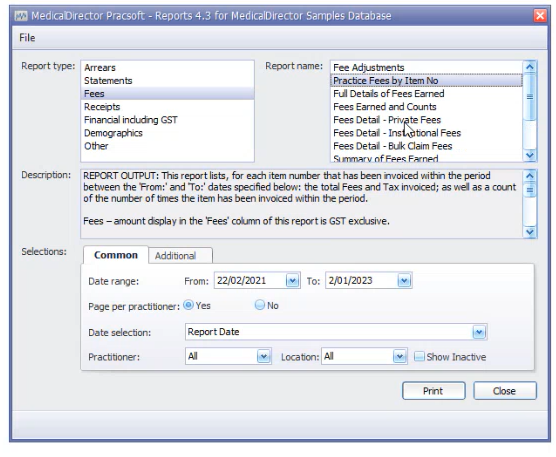
5) Go to the “additional” tab and type in “715”
6) Press “print” to display the report on screen
Document progress on completed health checks and patient goals. Implement a Plan-Do-Study-Act (PDSA) cycle to ensure continuous improvement.
Step 3: Complete and reflect on your activity
As a team, reflect on how the activity went.
What were the challenges/barriers?
What worked well?
Are there any changes that you could implement to continue improving on 715 Health Checks?
Example of completed QI activity
Resources to support with your activity
Please find attached all of the tools and resources to support with your activity below.
Tools and resources
We appreciate your feedback!
Our Quality Improvement Team works with general practices to provide practical advice and resources to help plan, implement, and review your QI activities. Your feedback helps our team to provide the best possible support for your practice.
Contact General Practice Quality Improvement
Phone: 07 3864 7540





